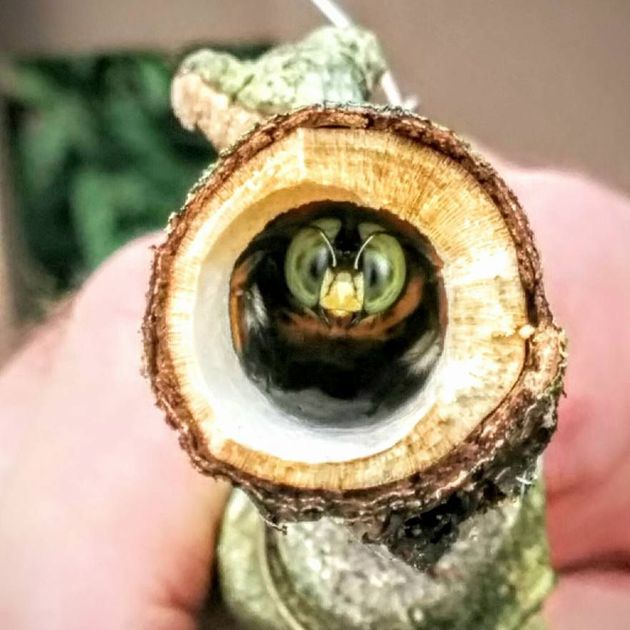Nickname: Gentle Giant
Favorite color: Anything but red
Favorite binge-watch: Log Cabin Living
Carpenter bees (genus Xylocopa) are the largest native bees in the United States.
These gentle giants get their common name from their habit of using their strong mandibles to excavate precisely rounded tunnels inside wood. They prefer soft wood for this purpose, such as standing dead trees. If this is not readily available, some species (like our eastern Xylocopa virginica) may decide to take up residence in fence posts or structural timbers such as deck or porch railings, and become a minor nuisance. (To deter them, simply apply paint or stain to any exposed wood.)
Inside the tunnel, the female deposits loaves of ‘bee bread’—balls of pollen and nectar-- upon which she lays her giant eggs (up to 15 mm long!). She forms partitions between each egg cell by mixing her saliva with sawdust, creating a substance very similar to particle board. Thus, each larva is supplied with ‘a room of its own’, along with all the food it will need.
In spring, you’ll often see several of these large bees zooming about, buzzing loudly. They may seem threatening, but these are just territorial males who are out to impress the ladies. And rather than representing a threat to us, they’re all talk—male carpenter bees don’t even have stingers!
In our gardens, carpenter bees are generalists and may be found foraging and pollinating a wide variety of plants.
Author: Lisa Schneider
Photo credits: Denise Holden


 RSS Feed
RSS Feed